
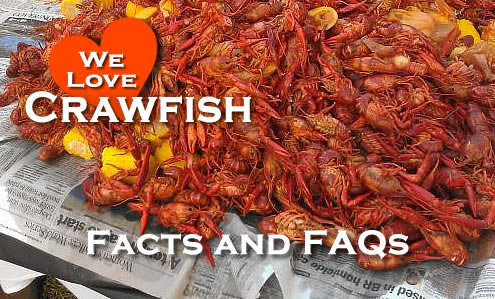 |
What is a crawfish? Or is it crayfish?
Crawfish are freshwater crustaceans, usually ranging in length from 3-6 inches. Some folks call 'em crayfish, crawdads, or mudbugs, but in Louisiana they are simply CRAWFISH, whether they are basin crawfish, spillway crawfish, or pond crawfish. The meat in their tails, and claws, is edible and the basis for crawfish boils and many popular recipes like gumbo, etouffee and jambalaya.
When is crawfish season?
Crawfish season varies from one year to the next, based on how cold (or mild) the weather was during the Gulf Coast winter. It also depends on the amount of rain, and the water levels in the swamps and bayous.
Generally, the crawfish season in Louisiana runs from mid-January through early-July for crawfish caught in the wild, with the peak months being March, April and May. Crawfish from farms are available over a longer period of the year.
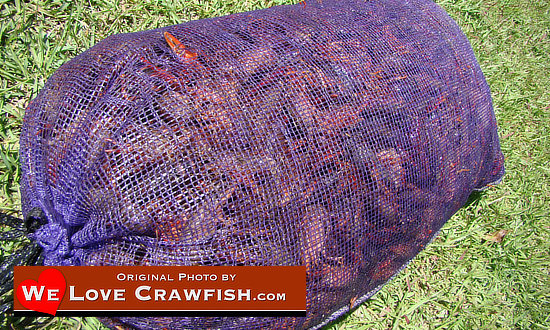 |
What is the typical size of a sack of crawfish?
Mesh sacks of crawfish vary in weight, but the average sack weighs around 34-36 pounds. However, some can be as small as 25lbs, others as large as 43lbs.
I'm ordering crawfish for an upcoming event. What is the recommended amount of crawfish per person?
The standard guideline is three pounds per person ... for the "average" person that is. This recommendation is based on serving the crawfish with corn and potatoes. Some long-time crawfish diners may consume up to five pounds.
How in the world do I boil crawfish?
Boiling crawfish is a Cajun tradition, an event and social gathering not to be rushed, but to be enjoyed with family and friends! Fill your chest with ice, beer and cold drinks, gather up newspaper to spread on the outdoor tables, setup the lawn chairs, and begin the "process".
There are dozens of recipes and techniques for boiling crawfish. Everyone has a favorite, but here is one popular recipe for Boiling Crawfish.
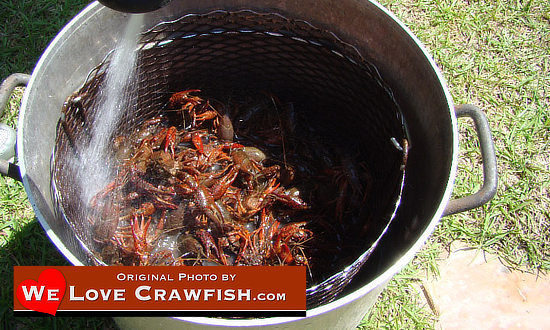 |
Do I have to purge my crawfish before boiling?
It is a personal preference, and not required. The crawfish should be thoroughly rinsed before boiling, but purging is optional.
How many species of crawfish are there?
There are 500 species of crawfish worldwide! Crawfish live on every continent in the world except for Antarctica and Africa. In North America there are over 330 different species. Louisiana has more than 30 different species, but only two species are commercially important to the industry: the red swamp crawfish and the white river crawfish. Both are commonly found in the same sack of live crawfish, although the red crawfish is more dominant.
What are crawfish ponds and farms?
Crawfish traps on a commercial crawfish farm in LouisianaCrawfish farms are a major industry in Louisiana, with commercial crawfish farmers providing over 85% of domestically produced crawfish to Louisiana markets and across the nation.
Louisiana’s crawfish farming industry has grown to include more than 1,200 farms occupying more than 120,000 acres. Crawfish ponds have no standard size, but most are between 10 and 40 acres, and most producers manage 150 or fewer acres.
Crawfish ponds are usually flooded in late September or early October. Farm raised crawfish account for approximately 85% of crawfish harvested, and production from natural bayous and swamps accounts for approximately 15%.
Can I tour a crawfish farm?
Yes ... Jeff Davis Parish in South Louisiana coordinates tours of a crawfish farm and crawfish processing plant ... a great learning experience for residents, tourists and school groups. Read more at Crawfish Farm Tours.
Which state produces the most crawfish?
Louisiana produces the most crawfish in the United States . The Louisiana crawfish industry generates $300 million in sales annually and employs over 7,000 people. With its popularity and economic impact on the state, Louisiana has declared the crawfish its "Official Crustacean".
Texas is the next most productive crawfish supplier. There are seven large producers with 100-300 acres of capacity each, mostly in southeast Texas between Beaumont and Houston. Small-scale producers are entering the market as an opportunity for supplemental income as demand grows.
Crawfish also are cultivated for food in Arkansas, Mississippi, Alabama, South Carolina and North Carolina, and are consumed in these and many other states.
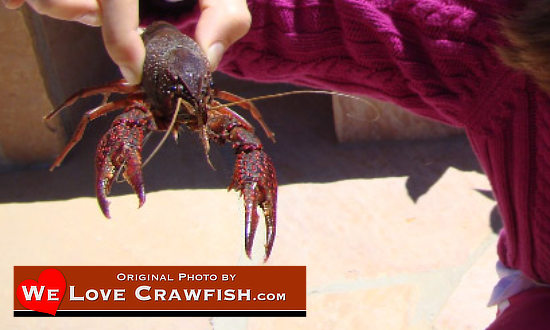 |
Will a crawfish bite me?
Hold a crawfish behind the head like in the photo to the right ... and you're safe!
Are crawfish good for your health?
Crawfish are an excellent source of high-quality protein, while being low in calories, fat, and saturated fat. One quarter pound of crawfish tails contains only 82 calories, while also being a good source of calcium, phosphorous, iron, protein, and the B Vitamins. Although crawfish tend to be higher in cholesterol than most other shellfish, a 3.5 ounce serving provides only about half of the daily recommended allowance.
|
Is the crawfish related to the lobster?
Crawfish are indeed a close relative of the lobster. They look alike, their coloration is similar; the lobster is just bigger.
What is the connection between Cajuns and crawfish?
Native Americans were eating crawfish long before the arrival of Europeans. The Acadians, ancestors of the Cajuns, arrived in Louisiana from Acadia in Canada, where seafood was a integral part of their diet. In Louisiana, the Acadians settled along the bayous, where crawfish were plentiful. The Acadian familiarity with lobsters led to the use of crawfish into their diet. Today, the Acadians, aka Cajuns, continue to love cooking, boiling and ding on crawfish!
What is the diet of the crawfish?
Crawfish eat plant materials, algae, snails, clams, insect larvae, small fish, and decayed carrion.
Do crawfish molt or shed their shell?
Crawfish can shed (molt) their shells up to 15 times in a lifetime, with the crawfish nearly doubling its size with each molt.
Can crawfish regrow their legs?
Crawfish can regenerate lost limbs, particularly useful during mating season when males can get very competitive and aggressive, and lose legs.
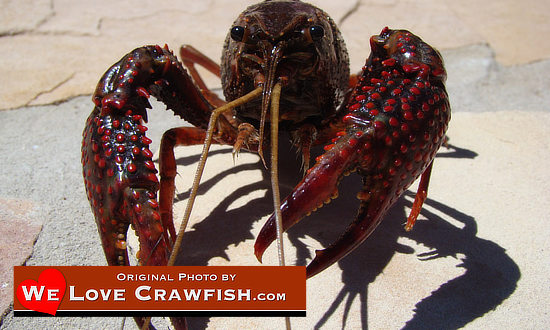 |
Do crawfish only crawl backwards?
Crawfish have eight pairs of legs, four are used for walking, and four are used for swimming. They walk forward, and move backward only when swimming with their abdomen movements. Swimming backward is the fastest and a common way for them to escape predators.
How much edible meat comes from a crawfish?
A whole, cooked crawfish will typically yield about 15% tail meat. So, as an example, 10 pounds of whole crawfish should yield about 1.5 pounds of tail meat.
How fast do crawfish grow, and what is their life expectancy?
The growth rate of a crawfish depends on water temperature and other factors; crawfish hatched in late fall will grow to a harvestable size in 4-5 months. Their natural lifespan is about 2-3 years.
What are the natural enemies of crawfish?
Crawfish are prey for raccoons, otter, mink, turtles, heron, cranes, bass, channel catfish and many more fish and animal species. And of course humans!
Does the female crawfish lay eggs?
A female crawfish lays 200 to 400 eggs and attaches them under her tail where they remain until they hatch.
SITE MAP | PRIVACY POLICY | TERMS OF USE | CONTACT US
Copyright © 2025 • WeLoveCrawfish.com • All Rights Reserved

